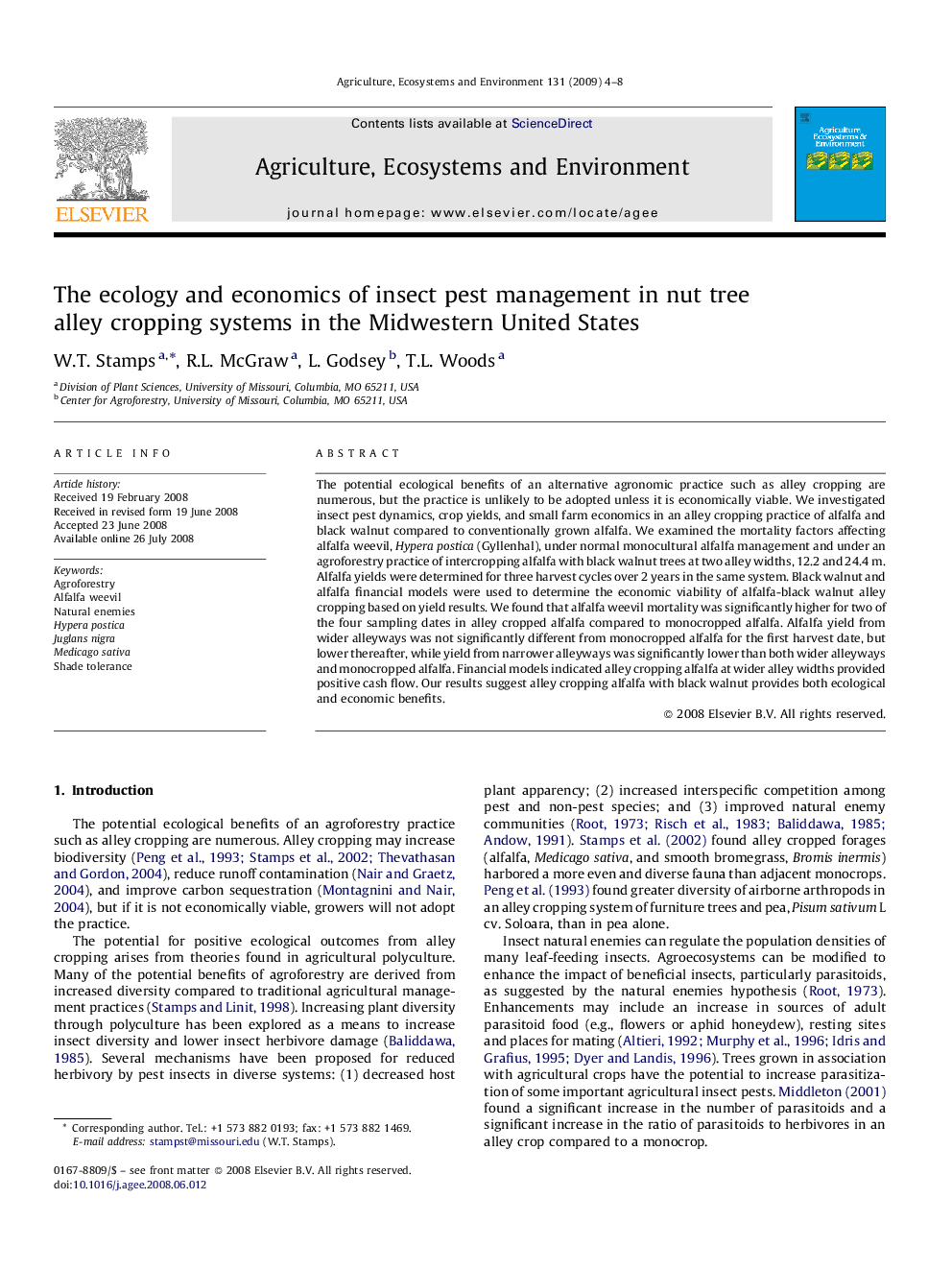| Article ID | Journal | Published Year | Pages | File Type |
|---|---|---|---|---|
| 2415205 | Agriculture, Ecosystems & Environment | 2009 | 5 Pages |
The potential ecological benefits of an alternative agronomic practice such as alley cropping are numerous, but the practice is unlikely to be adopted unless it is economically viable. We investigated insect pest dynamics, crop yields, and small farm economics in an alley cropping practice of alfalfa and black walnut compared to conventionally grown alfalfa. We examined the mortality factors affecting alfalfa weevil, Hypera postica (Gyllenhal), under normal monocultural alfalfa management and under an agroforestry practice of intercropping alfalfa with black walnut trees at two alley widths, 12.2 and 24.4 m. Alfalfa yields were determined for three harvest cycles over 2 years in the same system. Black walnut and alfalfa financial models were used to determine the economic viability of alfalfa-black walnut alley cropping based on yield results. We found that alfalfa weevil mortality was significantly higher for two of the four sampling dates in alley cropped alfalfa compared to monocropped alfalfa. Alfalfa yield from wider alleyways was not significantly different from monocropped alfalfa for the first harvest date, but lower thereafter, while yield from narrower alleyways was significantly lower than both wider alleyways and monocropped alfalfa. Financial models indicated alley cropping alfalfa at wider alley widths provided positive cash flow. Our results suggest alley cropping alfalfa with black walnut provides both ecological and economic benefits.
